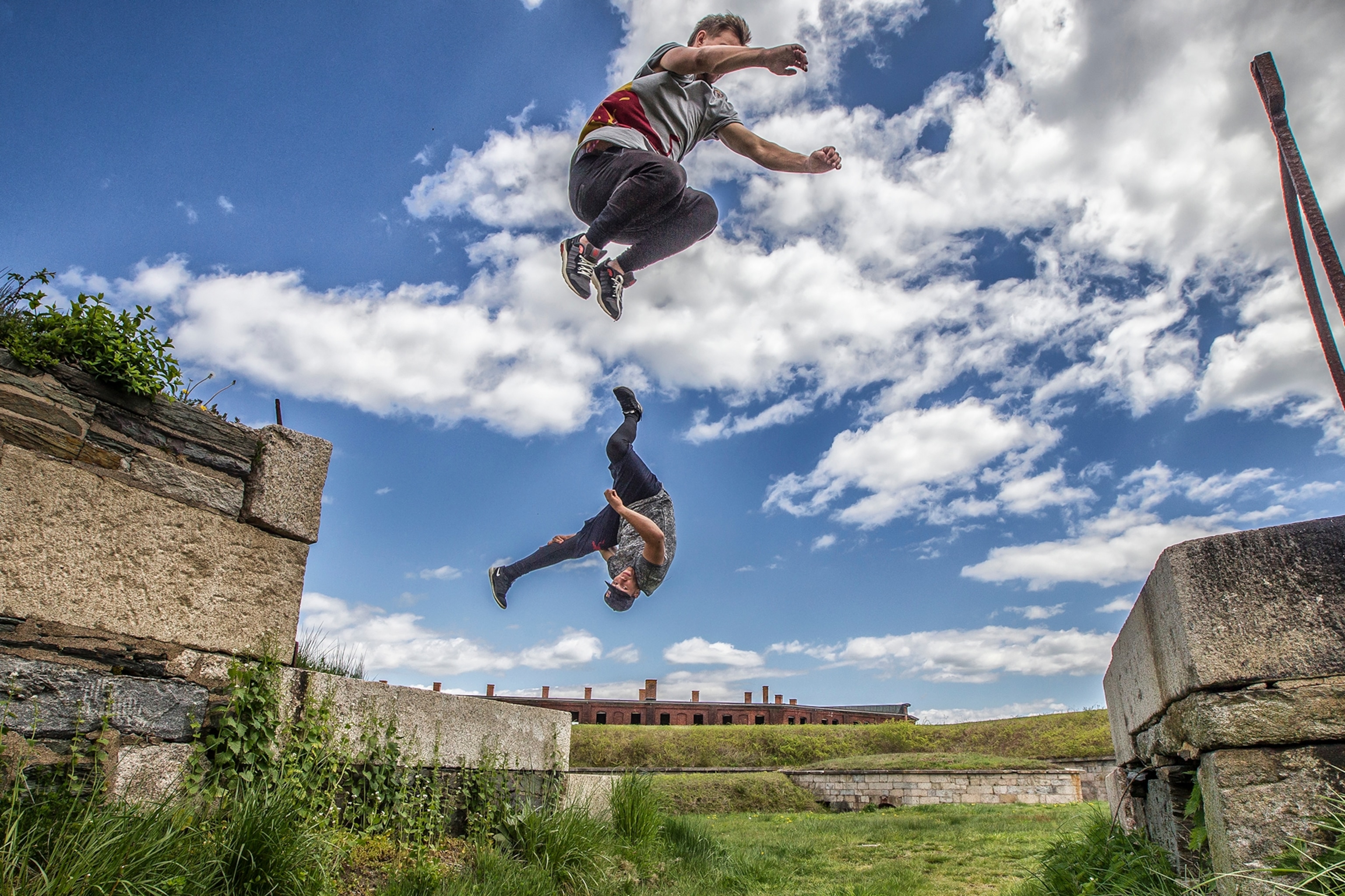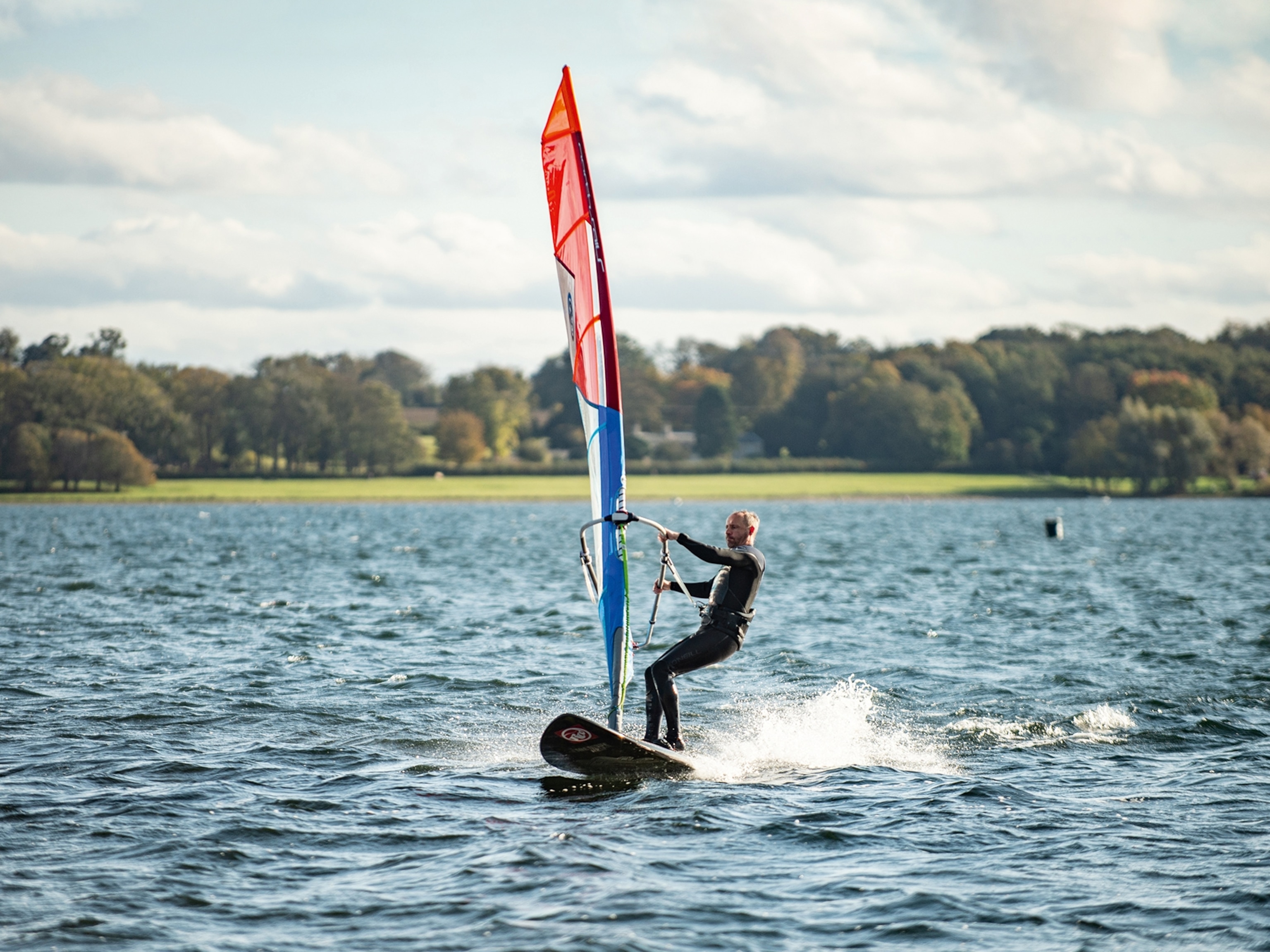












Parkour Can Be Dangerous—but More and More People Are Doing It
Amid risk and controversy, this urban adventure sport continues to grow.
In the early 1900s, a French naval lieutenant was inspired by communities abroad to create a physical training plan focused on moving smoothly and efficiently through the available environment, all in the service of others. He called it “the natural method,” and it became the foundation of the obstacle training used by the French special forces in the 1950s—known as parcours du combatant. In the 1980s, a French teenager named David Belle learned the discipline from his father, a veteran and fireman. Along with a small group of friends, Belle shaped the sport into what it is now and named it parkour in the late 1990s.
Over the years, parkour—and freerunning, a variation of the sport—has evolved, shifting with each new generation of participants. Some traceurs, or parkour athletes, are traditionalists and believe the root of the sport is the seamless action of moving from one location to another. Others prefer to spice up their movements with flips and spins, using the activity as a form of artistic and physical expression. Certain groups hold competitions, while others feel competition conflicts with the original goals of the discipline. Nearly all athletes embrace the method’s mantras of self-improvement and harnessing the power of your own body and mind.
Critics of parkour say it can be dangerous for participants, encourage trespassing, and cause damage to property. Over the years, multiple people have died while attempting perilous stunts, like jumping from roof to roof or climbing on high ledges and rails. Despite the controversy and risks, the United Kingdom has officially recognized the sport and it continues to grow internationally—aided by social media likes and YouTube views.
Related Topics
You May Also Like
Go Further
Animals
- Orangutan seen using plants to heal wound for first timeOrangutan seen using plants to heal wound for first time
- What La Palma's 'lava tubes' tell us about life on other planetsWhat La Palma's 'lava tubes' tell us about life on other planets
- This fungus turns cicadas into zombies who procreate—then dieThis fungus turns cicadas into zombies who procreate—then die
- How can we protect grizzlies from their biggest threat—trains?How can we protect grizzlies from their biggest threat—trains?
- This ‘saber-toothed’ salmon wasn’t quite what we thoughtThis ‘saber-toothed’ salmon wasn’t quite what we thought
Environment
- What La Palma's 'lava tubes' tell us about life on other planetsWhat La Palma's 'lava tubes' tell us about life on other planets
- How fungi form ‘fairy rings’ and inspire superstitionsHow fungi form ‘fairy rings’ and inspire superstitions
- Your favorite foods may not taste the same in the future. Here's why.Your favorite foods may not taste the same in the future. Here's why.
- Are the Great Lakes the key to solving America’s emissions conundrum?Are the Great Lakes the key to solving America’s emissions conundrum?
- The world’s historic sites face climate change. Can Petra lead the way?The world’s historic sites face climate change. Can Petra lead the way?
History & Culture
- Meet the ruthless king who unified the Kingdom of Hawai'iMeet the ruthless king who unified the Kingdom of Hawai'i
- Hawaii's Lei Day is about so much more than flowersHawaii's Lei Day is about so much more than flowers
- When treasure hunters find artifacts, who gets to keep them?When treasure hunters find artifacts, who gets to keep them?
Science
- Why ovaries are so crucial to women’s health and longevityWhy ovaries are so crucial to women’s health and longevity
- Orangutan seen using plants to heal wound for first timeOrangutan seen using plants to heal wound for first time
- Should you be concerned about bird flu in your milk?Should you be concerned about bird flu in your milk?
Travel
- On this Croatian peninsula, traditions are securing locals' futuresOn this Croatian peninsula, traditions are securing locals' futures
- Are Italy's 'problem bears' a danger to travellers?Are Italy's 'problem bears' a danger to travellers?
- How to navigate Nantes’ arts and culture scene
- Paid Content
How to navigate Nantes’ arts and culture scene




